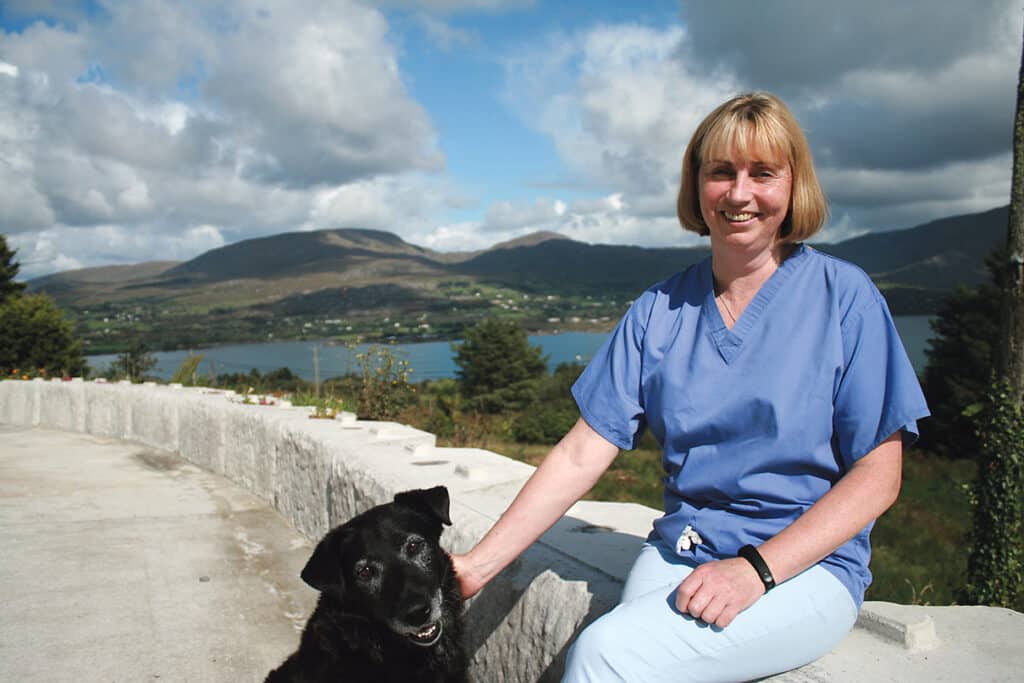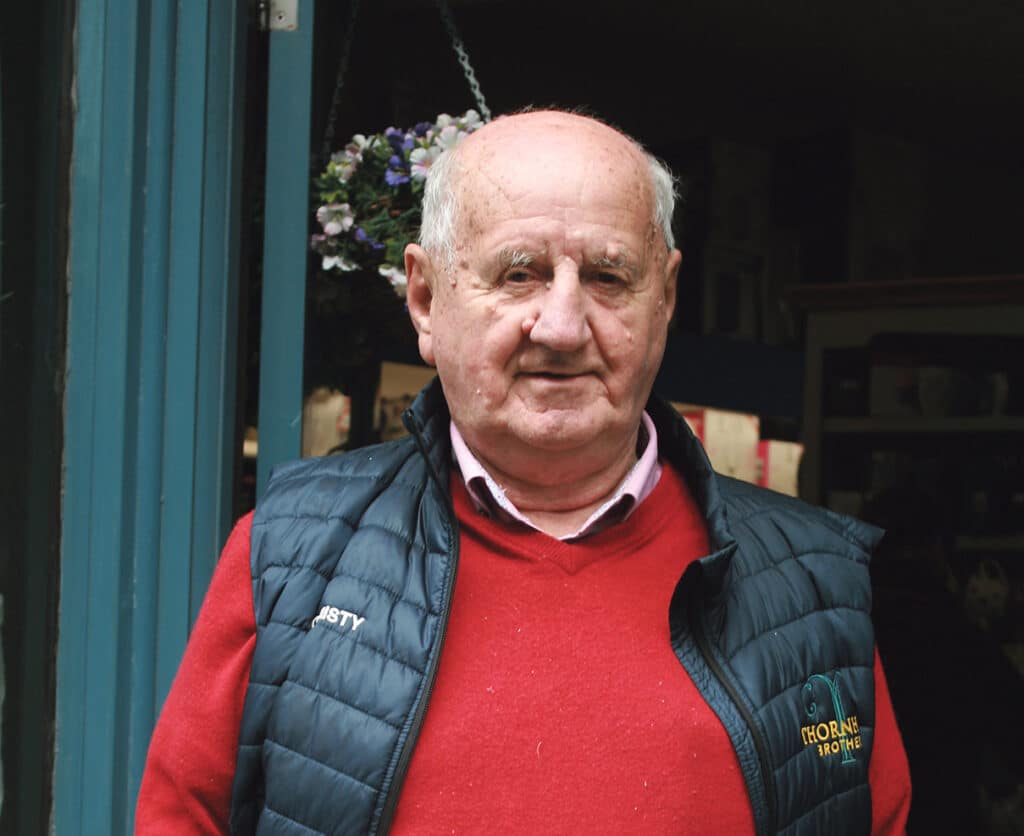“It’s like having one big ward,” laughs nurse Catherine O’Sullivan, as she describes her role as an island nurse. It’s much more than that however, as Catherine is something to everyone on Bere Island on the Beara peninsula, from offering support and advice to the mother of the week-old baby to the carer of the 90-year-old pensioner who has returned home from the hospital to die. There are in or around 200 inhabitants on Bere Island today, a number which swells considerably during the tourist season. They’re a fiercely independent and close-knit community finds Mary O’Brien, with everybody looking out for each other.

Catherine o’Sullivan has never left Bere Island: It’s where she grew up, met her husband and reared her family. Being able to live and work there was always her heart’s desire. When she does step off the island, inevitably she feels a fierce pull back: “I always find myself breathing a deep sigh of relief when I hit that patch of road at Adrigole where you can see the tip of the island,” she shares.
Like most of the islanders, much of Catherine’s childhood was spent along the shoreline, digging for clams and periwinkles and lobster fishing. A close family, Catherine remembers her parents were never far. “My dad fished and farmed, did a bit of everything really, he was a postman and a builder when needed too!”
Catherine’s mother, who sadly passed away last year, worked at home and on the farm and when her children were reared, like many of the island women, she got a job in the fish factory in Castletownbere.
Catherine recalls how all of the children had a bucket – the size depending on age – and once you had filled your bucket with periwinkles, you were allowed to go and play. The periwinkles were sold to local buyers before being exported to France.
She remembers having measles as a child and Nurse Mullins arriving on her bicycle with multivitamins. Later on, when Catherine was 13, she developed pneumonia and recalls her father having to carry her down through the fields and across to the mainland in his punt before she was transferred to a Cork Hospital by ambulance. While today Catherine has a handheld radio that connects her directly with the ambulance and search and rescue helicopter control desk – there have been two successful helicopter evacuations for head injuries on Bere Island since August – in those days, emergency services to the island were limited. “The doctor in Castletownbere actually told off my poor father, as he said my heart could have given out from the strain of the journey, but sure what else could he have done,” she shares. “For a long time, the only ‘ambulance’ we had access to on the island was a stretcher in the back of a van.” Today there are four defibrillators and three Community Responders trained in CPR on Bere Island.
Warm and compassionate with an easy laugh and efficient manner, it’s obvious that Catherine is good at her job: Her predecessor was Nurse Veronica Crowley and before her Nurse Mullins, both of whom made a strong impression on the young islander.
“Veronica Crowley taught me so much, practical, sensible stuff,” she shares. “My own daughter is a nurse today and you don’t got that type of experience when you’re training anymore.”
In the old days the public health nurse was also a midwife and cycled around the island from house to house. The last baby that was delivered on Bere Island is now nearing 40.
While Catherine had the luxury of an automobile for her role, her first car did come without a bonnet. “I was told I had the cleanest engine on the island because it was rained on,” she laughs.
After leaving school, she did some voluntary work in Castletownbere hospital before starting her training in the Mercy in Cork in 1986. She married fellow islander Gerard O’Sullivan, who owns the local boatyard and drydock and continued working after having her two children, travelling up and down to Cork City before relocating to Castletownbere Hospital. When the job opening arose on Bere Island in 1995, she didn’t think twice about returning from maternity leave after just a few weeks, to fill the post.
It’s a role that involves everything from offering advice and assistance and supporting people in their own care, in particular the elderly and under-fives, to doing dressings and giving injections. She also covers essential services, offering palliative care if someone is dying at home. Island life can be isolating, with loneliness greatly impacting mental health, so sometimes just providing some company is more important than anything. There is a huge social care side to the role.
“Being an island nurse is a much broader role than being a nurse on the mainland,” Catherine explains. “You have to be open to listening and learning but also to knowing your limitations. There is only me!”
Her biggest fear is a multi-person accident. “Who do you deal with first?” she explains. A few years ago a golf cart with four teenagers went over a 15-foot sand bank and Catherine was one of the first at the scene. “My happiest moment was looking over that bank and seeing four pairs of eyes staring up at me,” she shares. “That kind of scenario is very daunting. Thankfully everyone came out of it ok.”
There’s a great sense of pride and inter-dependence in being an islander and nurse Catherine is grateful to be able to play her part in her community. “We have an amazing ferryman,” she says. “I’ve pulled him away from all sorts of occasions including his Christmas dinner and he has never once uttered a word of complaint or refused me! Nothing gets in the way of helping someone on the island, even a disagreement between neighbours,” she shares. “Everyone steps up when needed on the island.”
Although she has worked more than enough hours to entitle her to retirement, Catherine has no intention of putting away her thermometer and bandages just yet. Once a nurse, always a nurse, especially on an island!



